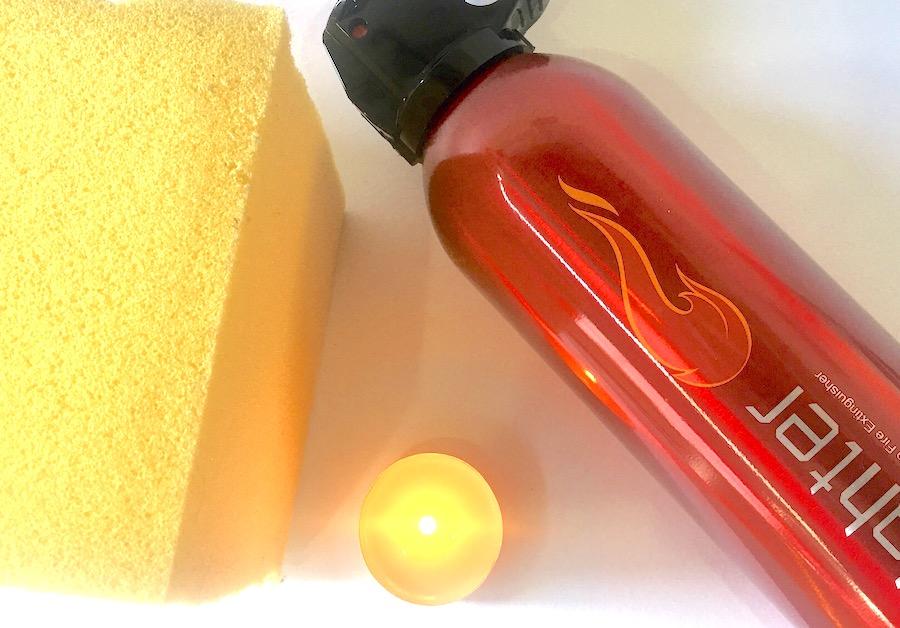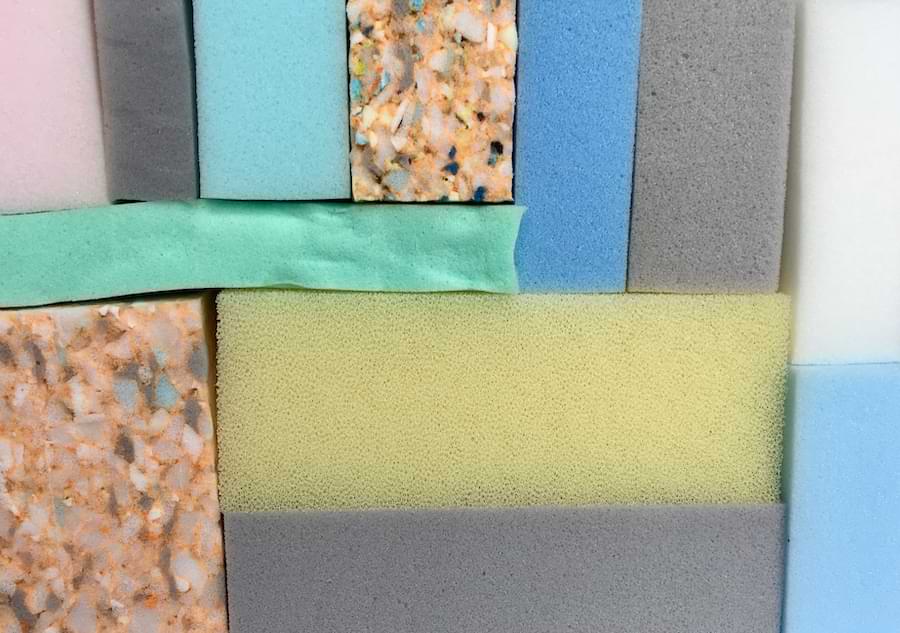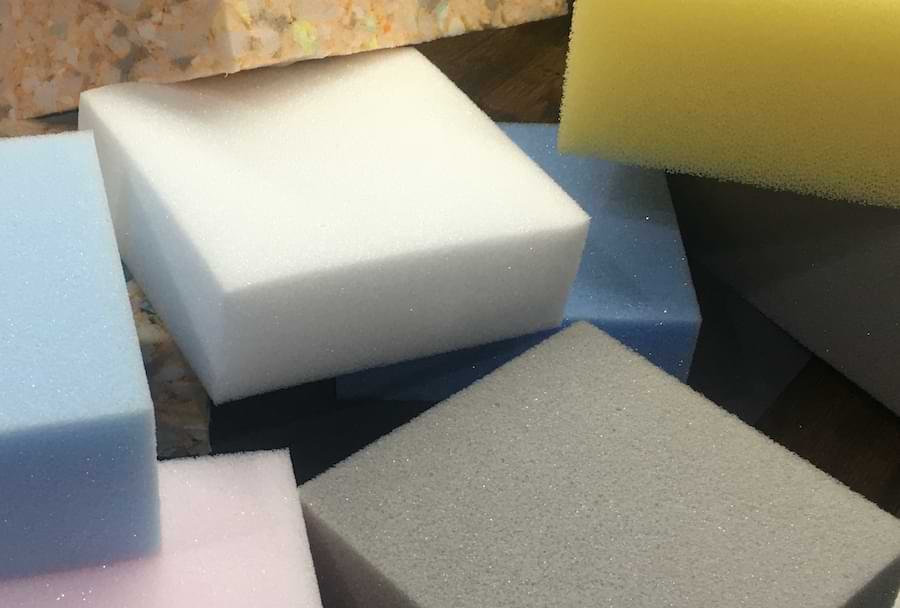I get asked a lot of questions about foam, and many of them are around memory foam. So in this article, I’ve tried to answer as many of the common foam questions that I get as best as possible.
I’ve listed them roughly in chronological order, from the pre-purchase of memory foam through to troubleshooting and performance, and then through to memory foam life expectancy and foam aging issues.
What does memory foam do?
Memory foam provides a contoured profile to the body, which provides pressure relief and comfort. Ideal for greater support for hips, neck, shoulders, and other areas of the body which require pressure relief. They are also warm and with minimal roll together.
How does memory foam work?
Memory foam works by softening under heat and pressure, molding around the body shape. This happens when the polyurethane foam reacts to external influences. When the pressure and heat are removed, memory foam returns to its original manufactured shape.
Does memory foam contain latex?
Memory foam, or, viscoelastic foam, is a synthetic high-density polyurethane foam that softens under heat and pressure. Natural Latex, however, comes from the rubber tree sap and is manufactured to create layers. Many memory foam mattresses are partially or completely composed of synthetic latex foam.
How long does memory foam take to expand
Most memory foam should be fully expanded within 4-6 hours. The complete expansion could take a further 4-6 hours. The firmer and better quality the mattress, the quicker the expansion rate. Open the memory foam packaging as soon as possible to allow around 12 hours for full expansion before use.
Here’s a table reiterating the approximate expansion times for most memory foam mattresses.
| Time | Expansion amount |
| 4 – 6 hours | 80 – 90% |
| 6 – 12 hours | 90 – 95% |
| 12 – 18 hours | 100% |
How can I make my memory foam expand faster?
Once opened, you can “encourage” memory foam to expand quicker by unwrapping in a warm room of 72°F (22°C) as memory foam responds well to warmth. Also, ensure there are no restrictions preventing the memory foam from expanding fully. If possible, allow up to 24 hours for full expansion.
Can you sleep on a mattress before it expands?
You can certainly sleep on a memory foam mattress before it has fully expanded. This will not affect its expansion to full size once weight is removed from the mattress. However, best results for sleep are obtained once it has fully expanded, if possible, allow 24 hours for full expansion to occur.
Does heat ruin memory foam?
Memory foam becomes more pliable under normal body heat, so warmth is not an issue and is expected. However, you should avoid the use of hot water bottles or electric blankets, as higher temperatures can reduce its performance, and potentially shorten the lifespan of your mattress. Find out more about memory foam and fire resistance.

Why does memory foam smell?
When initially unwrapping memory foam, you may experience a manufacturing chemical-type smell. This is known as off-gassing and although it may be unpleasant it is quite normal. These petrochemical fumes should reduce greatly within the first week, and should disappear altogether after four weeks.
Why is my memory foam mattress so uncomfortable?
The comfort of memory foam is less about the material and more about firmness and density. If your memory foam mattress feels too firm this can cause issues to the neck, shoulders, hips, and lower back. A lower density and firmness rating should offer more “give”, to ensure a more comfortable feel.
Does memory foam need a box spring?
Generally speaking, a memory foam mattress does not require a box spring, it can function adequately and comfortably without one. Although for added comfort, consider using a platform bed, slat foundation, mattress foundation, or adjustable frame.
How to care for a memory foam mattress
Regular rotation of your mattress, flipping both vertically and horizontally will ensure worn areas are evened more across the mattress. Occasional or minimal use will also ensure longer life of your mattress. Inevitably, like most mattresses, it will need to be replaced.
If caring for foam used outdoor, check out the best outdoor seating foam.
Why does memory foam turn yellow?
All foam turns yellow naturally over time through oxidization. Just like when a penny becomes darker over time. This is a completely natural process that the foam goes through and in no way impairs the effectiveness of the foam.

Does urine ruin memory foam?
Acting quickly, soak up excess fluid, then saturate the area with white vinegar. Sprinkle plenty of baking soda over the area and allow 12-24 hours to dry. Vacuum thoroughly and air in a warm place. Staining may be gone, or just light in nature. Use water-resistant covers where possible.
Does memory foam soften over time?
Memory foam can appear hard at first. But over time, memory foam will naturally soften simply through use. You should notice softening within the first 7-14 days. If the mattress appears too firm initially, then spending a few days sleeping on it may provide you with a better, softer experience.
Does memory foam wear out? How long does it last?
In general, a memory foam mattress lasts around 7 years. This can be extended to 10-15 years if used occasionally, or with regular rotation. After this period, expect your mattress to begin sagging in heavy use places. Turning the mattress can help extend its lifespan.
For longer lifespan foam, check out rebond foam.
How do I know if my memory foam mattress is worn out
Over time the cellular structure of your memory foam mattress will weaken. It will appear to soften and lose its bouncebackability. You will notice it takes longer to recover from body imprints, and may appear to visibly sag in heavy use areas. The deeper the impression, the more worn the mattress.
How long does a memory foam topper last?
3 – 4 years is the general time you can expect a memory foam mattress topper to last with regular use. Generally, the higher the density, the more firm, and the longer the life. Higher-density memory foam toppers (4 lbs/ft or more) may last longer than lower density memory foam (3 lbs/ft or less).
Memory foam should generally be expected to last about three to four years with regular use – a rate somewhat better than that of the average topper.
Can memory foam be restored?
A sagging memory foam mattress cannot be restored by any household method. The best remedy is either to replace it or add a mattress topper to bolster the firmness. You can also additional add support under the mattress with the use of firmer foam such as high-density foam or rebond foam.

ANSWERED: Memory foam questions
I hope this has helped to answer some of the common questions associated with memory foam. Be sure to check out other articles so you can understand more about what foam suits your needs.
From my other helpful articles, I’d recommend:
